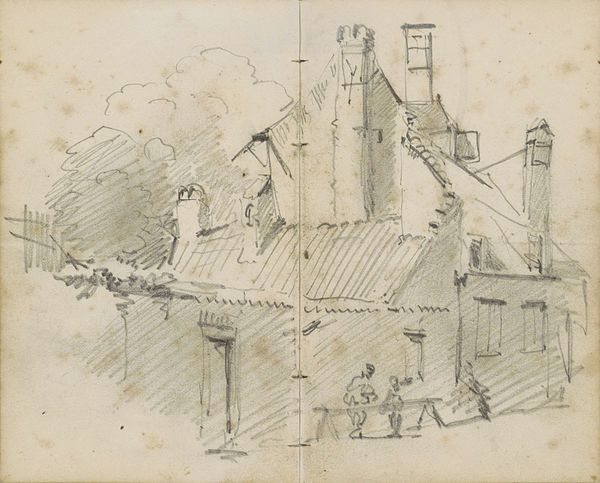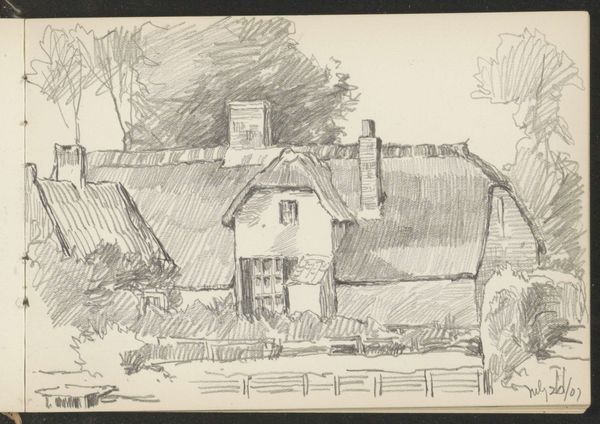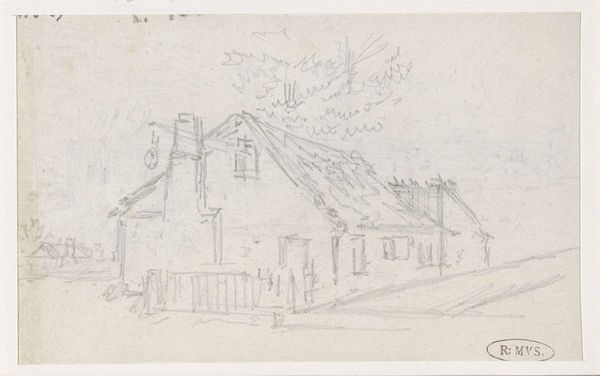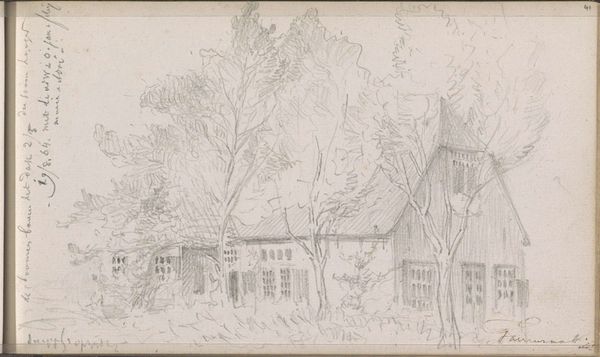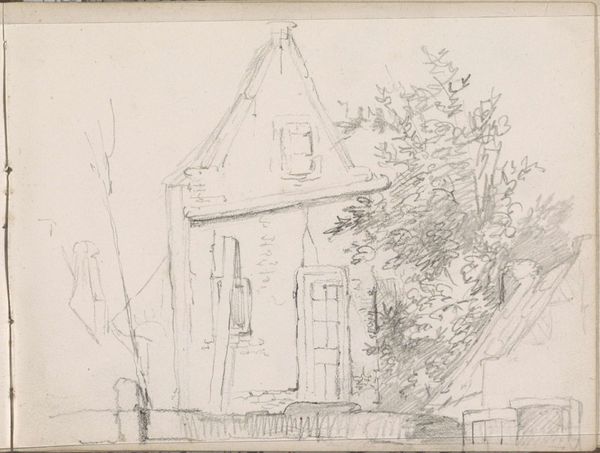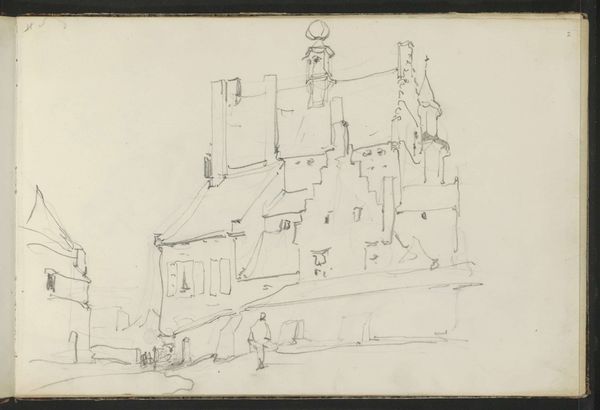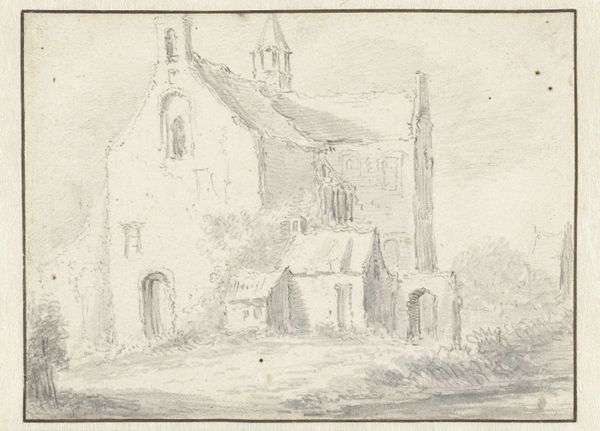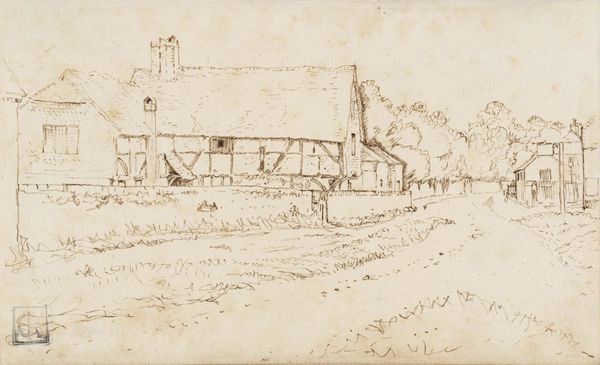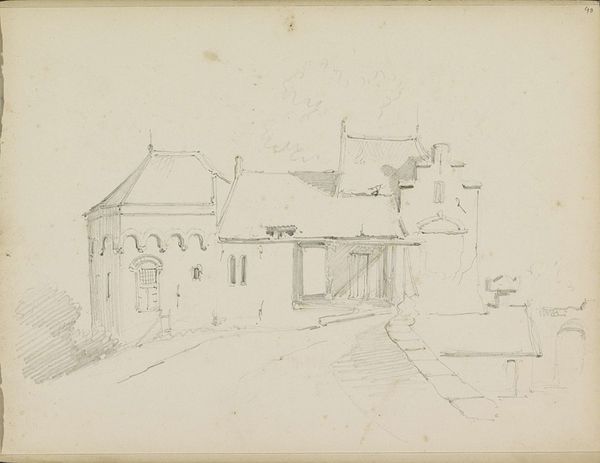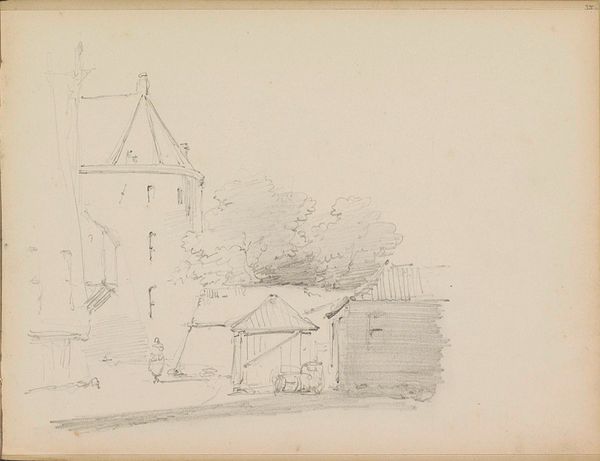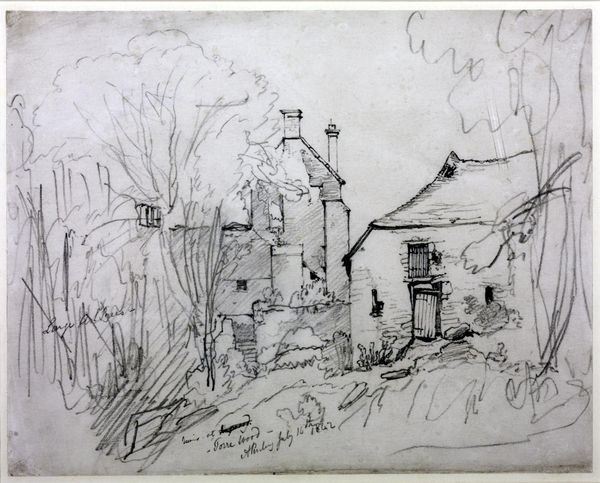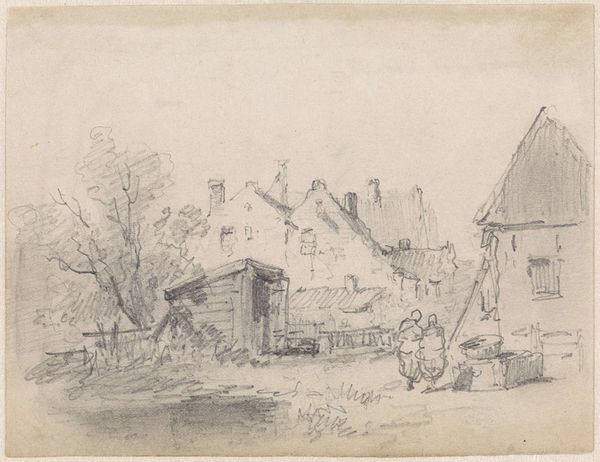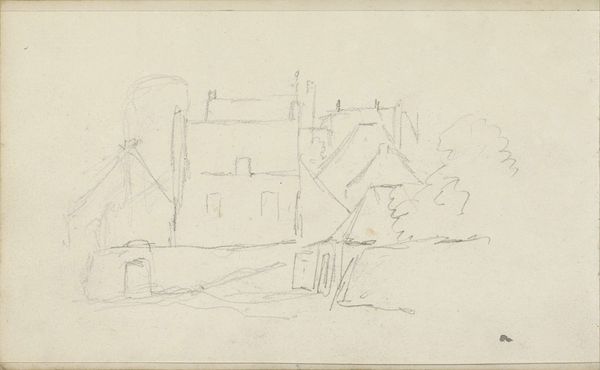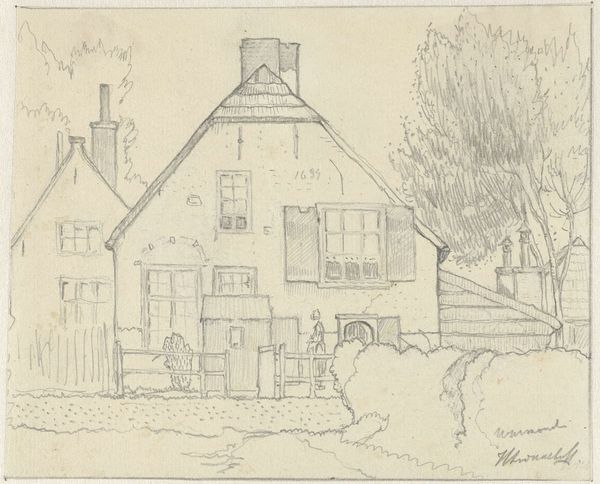
drawing, pencil
#
architectural sketch
#
drawing
#
quirky sketch
#
dutch-golden-age
#
pen sketch
#
incomplete sketchy
#
landscape
#
personal sketchbook
#
sketchwork
#
pen-ink sketch
#
pencil
#
pen work
#
sketchbook drawing
#
cityscape
#
realism
#
initial sketch
Copyright: Rijks Museum: Open Domain
Curator: Willem Koekkoek’s “Dorpsstraat,” created sometime between 1849 and 1895, offers a glimpse into a Dutch village streetscape, rendered with pen and pencil on paper. It is currently housed here at the Rijksmuseum. Editor: Immediately, I notice how light the touch is; a fleeting moment captured. Almost like a memory fading in and out. The stark architectural details contrast sharply with the softness of the surrounding foliage, like different stages of reality. Curator: Considering the context of Koekkoek’s time, these sketches are powerful acts. With increasing industrialization, capturing traditional Dutch townscapes served to preserve a rapidly vanishing way of life, a specific cultural identity facing profound transformation. The seemingly simple scene of daily life then gains considerable historical weight, speaking to anxieties about progress and cultural loss. Editor: That preservation is certainly evident, though through a gentler lens. The sketch’s lack of embellishment presents a raw, almost humble scene. Focusing on the details: notice how the repeated triangular forms of the rooftops create a pattern. Those geometric shapes evoke feelings of security, the pointed roofs protectively overlapping. The windows remind me of medieval portals; maybe these are sacred dwellings that shape our view of the world, acting like guardians of public and private spaces. Curator: Absolutely, there’s a narrative here that speaks to the values embedded in domestic spaces. The deliberate inclusion of architectural details suggests an attempt to validate the importance of these buildings, which in turn shape the community's socio-political dynamics. We see here a dialogue about the identity of communities that will inevitably expand to a national and eventually global community. Editor: A humble sketch holds such complexity! Reflecting on the drawing again, it offers us both the comfort of structure and the freedom of nature—a constant tension visualized so simply. Curator: It leaves me pondering how art, even in its simplest form, becomes an important medium to capture, preserve, and interrogate cultural identities during transitional moments in history.
Comments
No comments
Be the first to comment and join the conversation on the ultimate creative platform.
